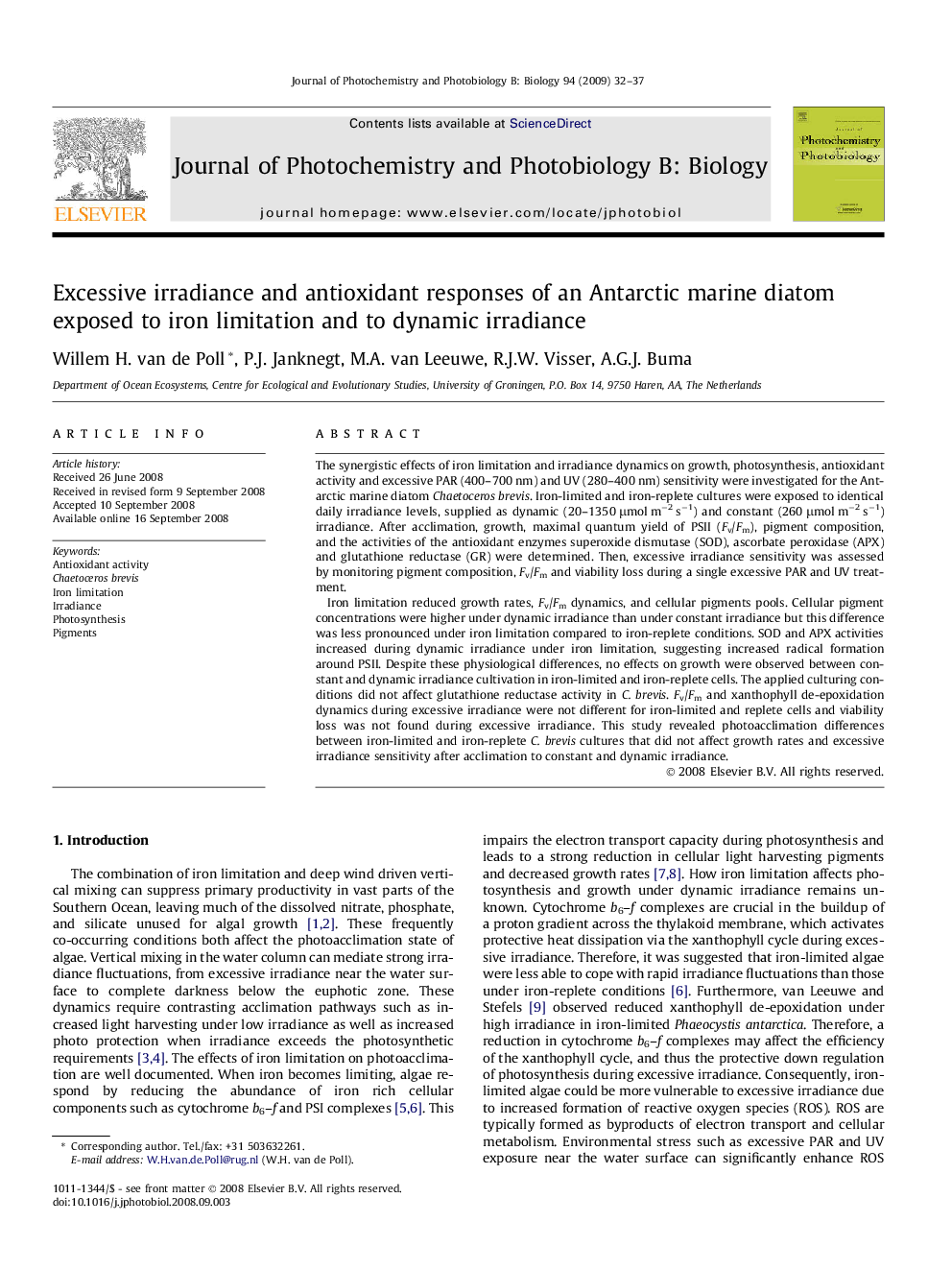| Article ID | Journal | Published Year | Pages | File Type |
|---|---|---|---|---|
| 30903 | Journal of Photochemistry and Photobiology B: Biology | 2009 | 6 Pages |
The synergistic effects of iron limitation and irradiance dynamics on growth, photosynthesis, antioxidant activity and excessive PAR (400–700 nm) and UV (280–400 nm) sensitivity were investigated for the Antarctic marine diatom Chaetoceros brevis. Iron-limited and iron-replete cultures were exposed to identical daily irradiance levels, supplied as dynamic (20–1350 μmol m−2 s−1) and constant (260 μmol m−2 s−1) irradiance. After acclimation, growth, maximal quantum yield of PSII (Fv/Fm), pigment composition, and the activities of the antioxidant enzymes superoxide dismutase (SOD), ascorbate peroxidase (APX) and glutathione reductase (GR) were determined. Then, excessive irradiance sensitivity was assessed by monitoring pigment composition, Fv/Fm and viability loss during a single excessive PAR and UV treatment.Iron limitation reduced growth rates, Fv/Fm dynamics, and cellular pigments pools. Cellular pigment concentrations were higher under dynamic irradiance than under constant irradiance but this difference was less pronounced under iron limitation compared to iron-replete conditions. SOD and APX activities increased during dynamic irradiance under iron limitation, suggesting increased radical formation around PSII. Despite these physiological differences, no effects on growth were observed between constant and dynamic irradiance cultivation in iron-limited and iron-replete cells. The applied culturing conditions did not affect glutathione reductase activity in C. brevis. Fv/Fm and xanthophyll de-epoxidation dynamics during excessive irradiance were not different for iron-limited and replete cells and viability loss was not found during excessive irradiance. This study revealed photoacclimation differences between iron-limited and iron-replete C. brevis cultures that did not affect growth rates and excessive irradiance sensitivity after acclimation to constant and dynamic irradiance.
